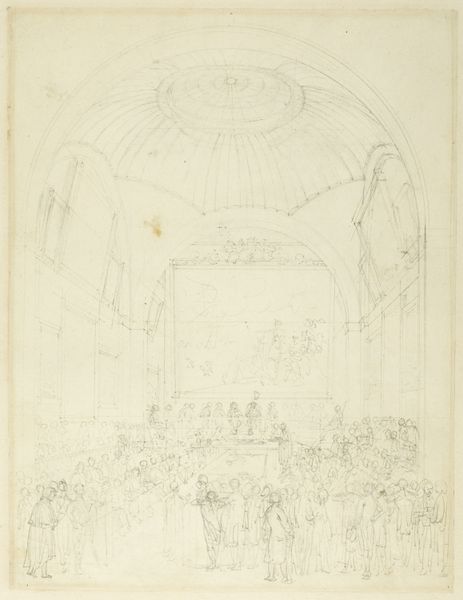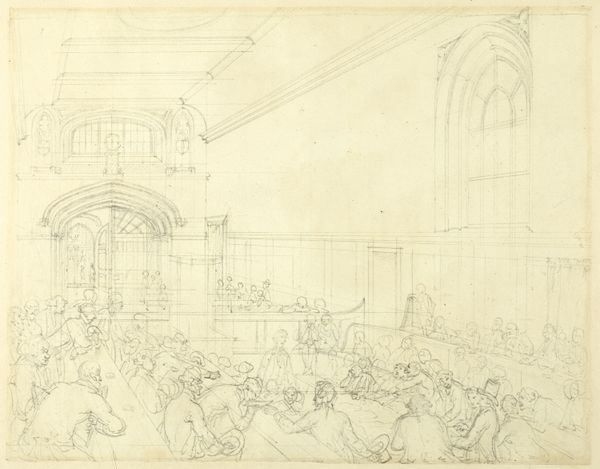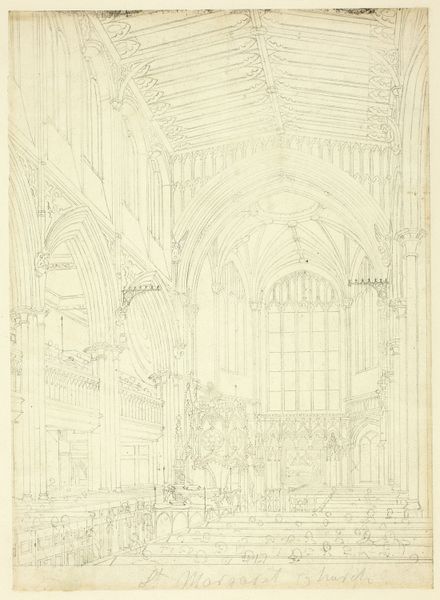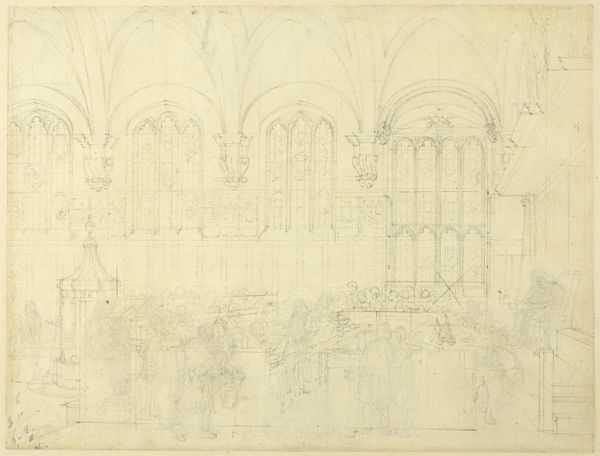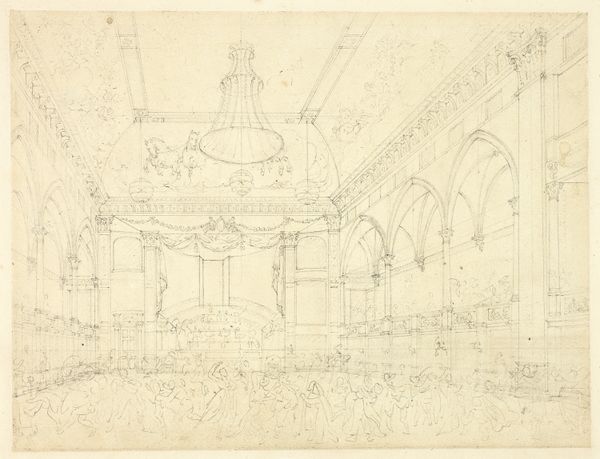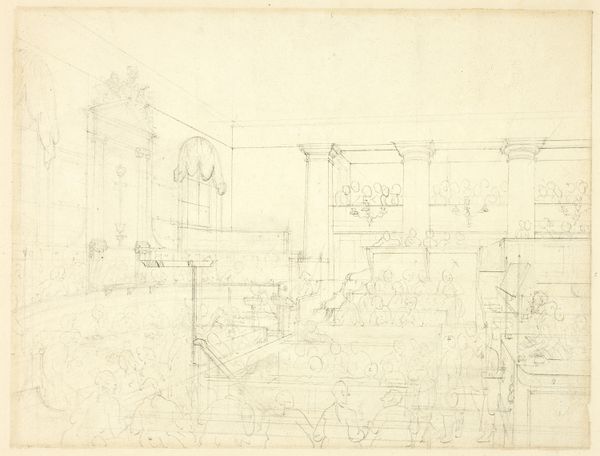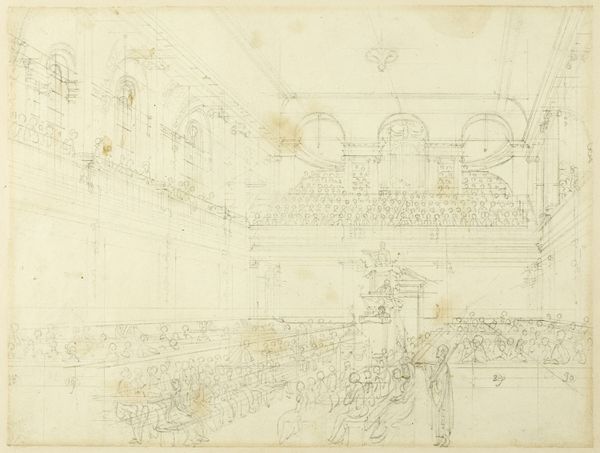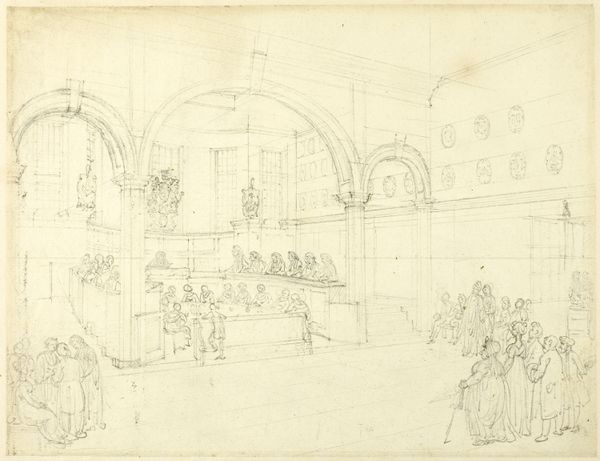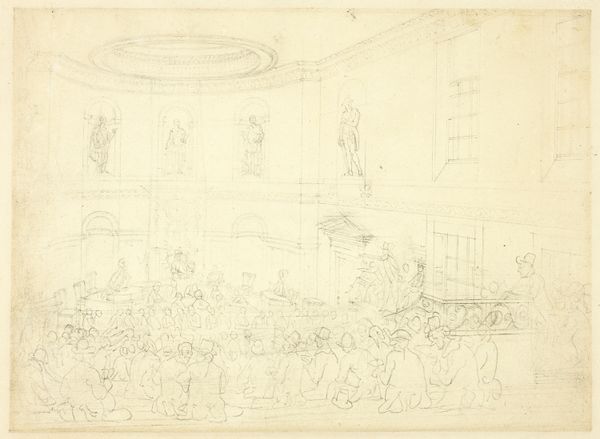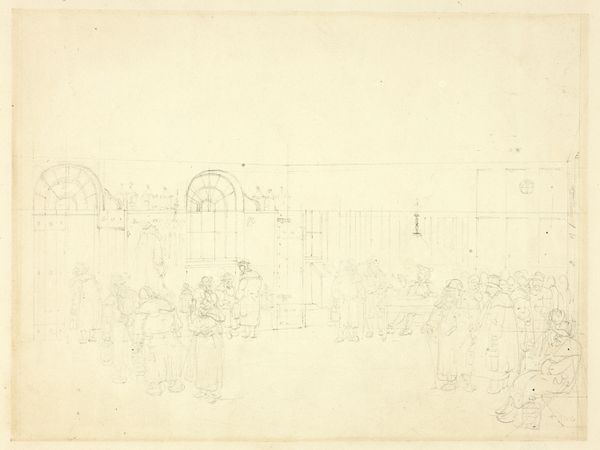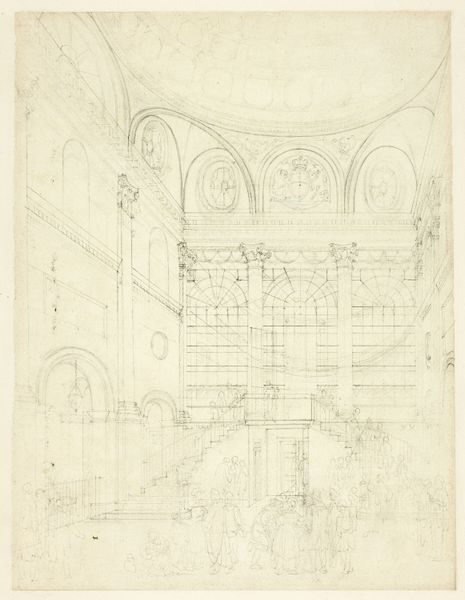
Study for Stock Exchange, from Microcosm of London c. 1809
0:00
0:00
drawing, print, etching, paper, pencil
#
drawing
#
neoclacissism
# print
#
etching
#
etching
#
paper
#
pencil
#
cityscape
#
history-painting
#
academic-art
Dimensions: 255 × 198 mm
Copyright: Public Domain
Curator: So, here we have Augustus Charles Pugin’s "Study for Stock Exchange, from Microcosm of London," created around 1809. A pencil, pen, and etching marvel on paper, currently housed at The Art Institute of Chicago. What's your immediate take? Editor: Chaos contained, perhaps? I see this vast hall, sketched with incredible detail in a spidery network of lines. The frenetic energy of the traders is almost palpable, yet the architectural rendering feels precise and controlled. It is a potent juxtaposition. Curator: It absolutely encapsulates that Georgian spirit, doesn't it? Pugin, known for his architectural drawings, perfectly captures both the grandeur and the buzzing hive of early 19th-century London’s financial heart. Editor: Absolutely, and it's the "how" as much as the "what," isn’t it? This isn't just a scene; it's a product of labor. Each precise line, each tiny figure meticulously rendered, speaks to hours of painstaking work, both by Pugin and by the printmakers who reproduced it for "Microcosm of London". Curator: Indeed! Think about the intended audience, too. The "Microcosm" was meant to give a snapshot of London life to those who maybe couldn’t access these spaces themselves. It creates a desire. Editor: That connects to our modern world. This print, through the very act of reproducing it and selling it, makes the stock exchange, and therefore, wealth, accessible and desirable to a broader audience. We see the democratization of capitalism, bit by bit. It's brilliant! Curator: It is amazing how Pugin captures the theatrical nature of the exchange. Everyone performing their role in this financial play. But do you think his work truly reflects its intricacies, or perhaps more the visual drama and spectacle it projects? Editor: I lean towards spectacle. Look at how he emphasizes the physical structure, almost overpowering the individual traders. It reminds us that economic systems are not ethereal things, but are made from actual bricks, mortar, paper, and human hands— all physical. Curator: Yes, exactly! Thanks for that insightful glimpse. A deeper dive really makes the viewing experience more meaningful, doesn't it? Editor: Absolutely. There is so much labor and cultural significance layered beneath its relatively unassuming surface.
Comments
No comments
Be the first to comment and join the conversation on the ultimate creative platform.
